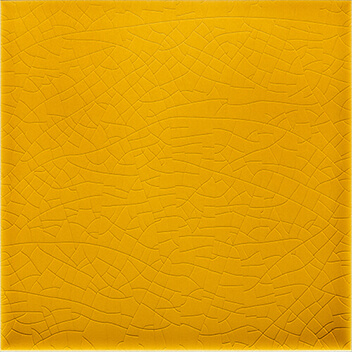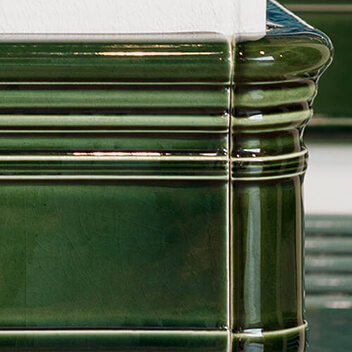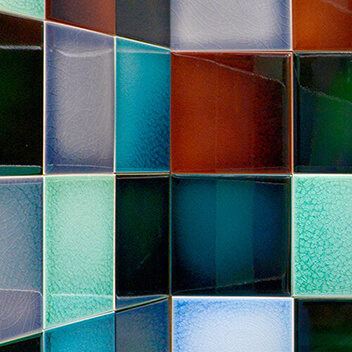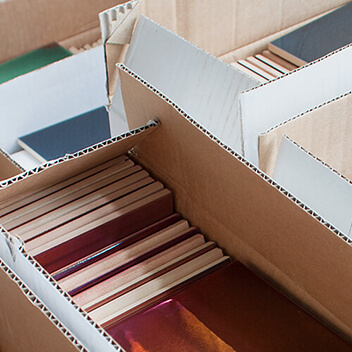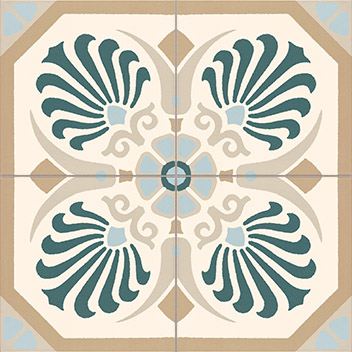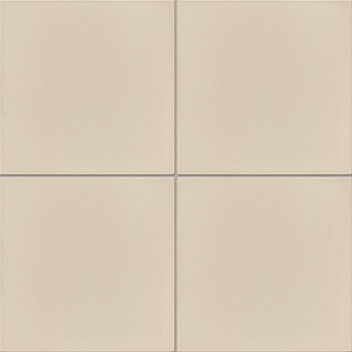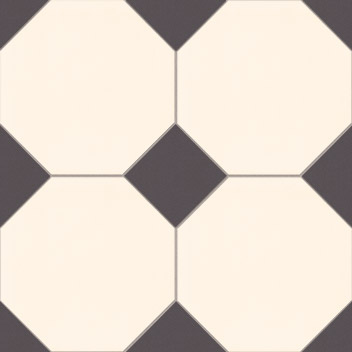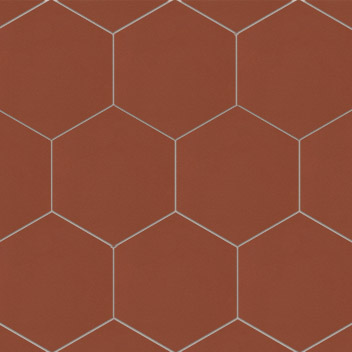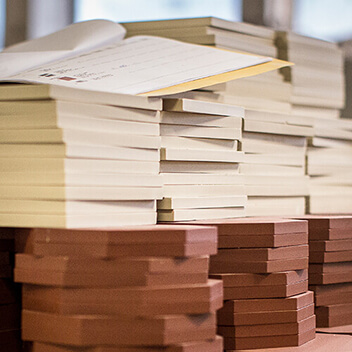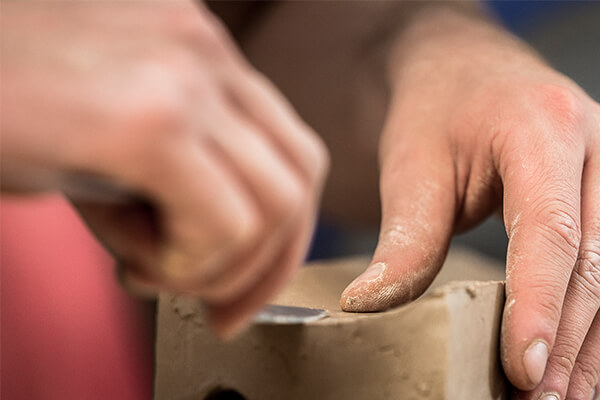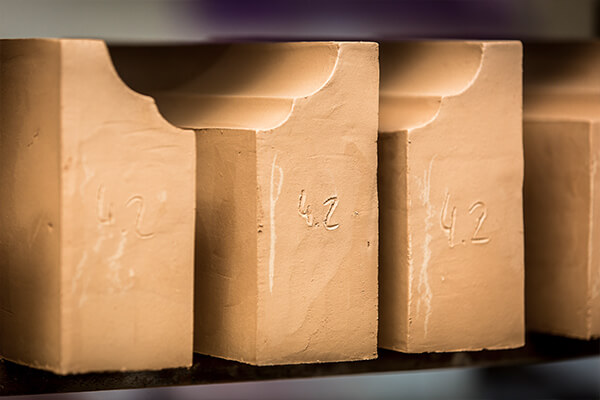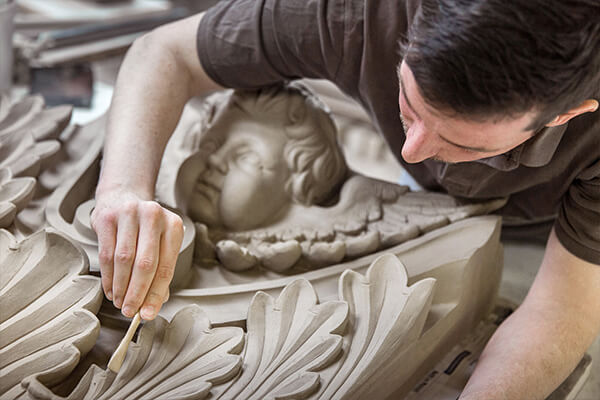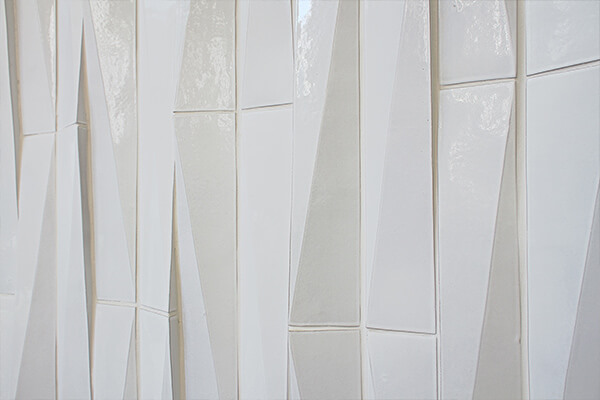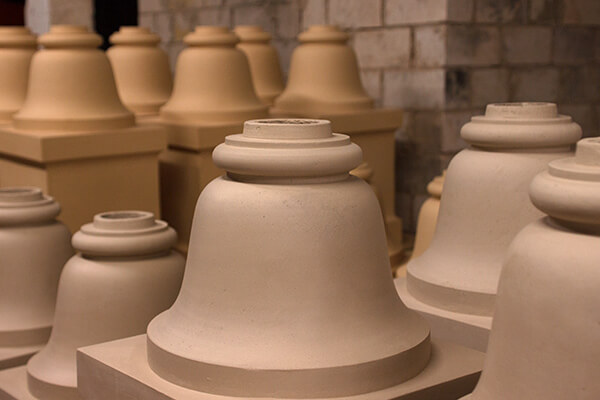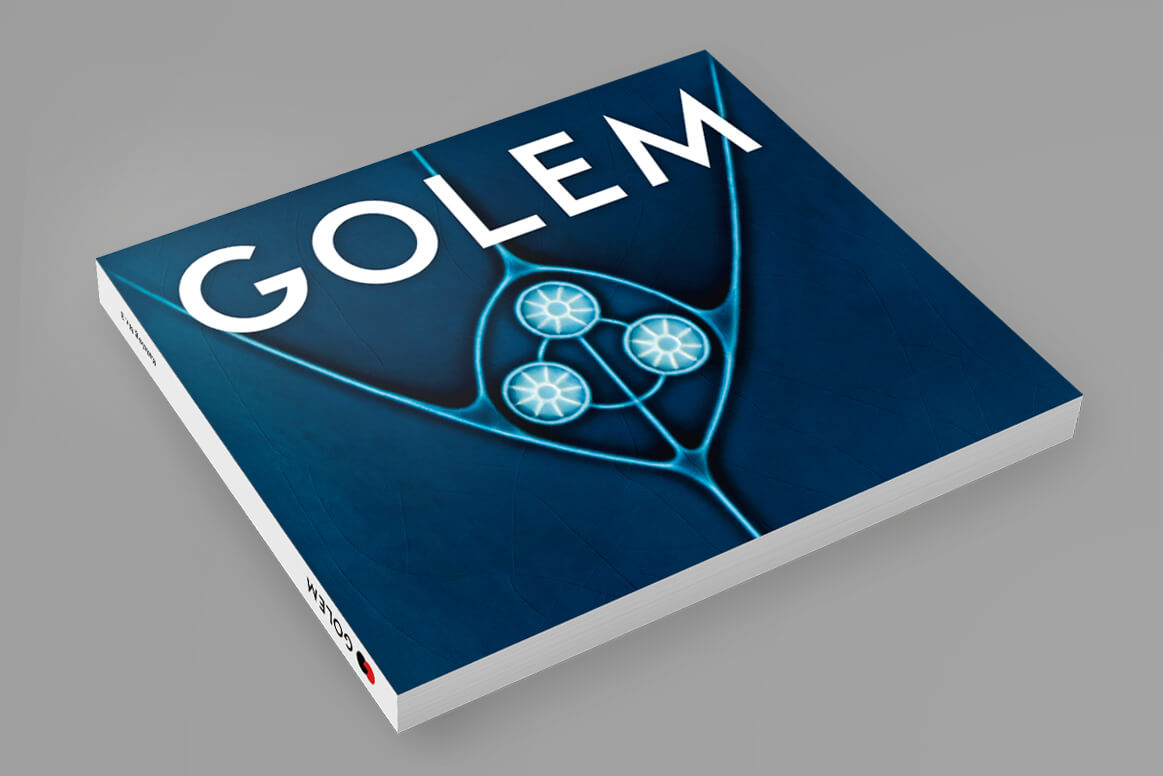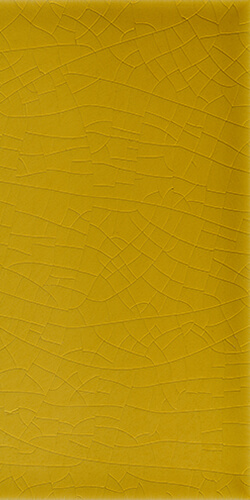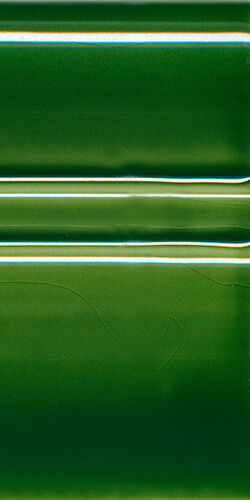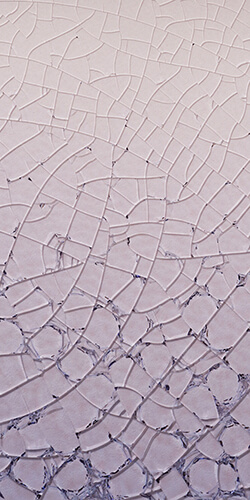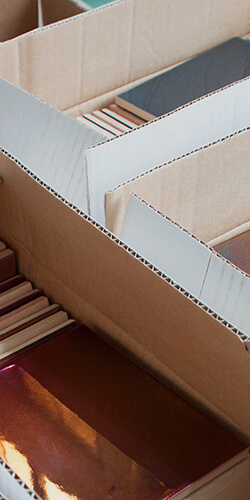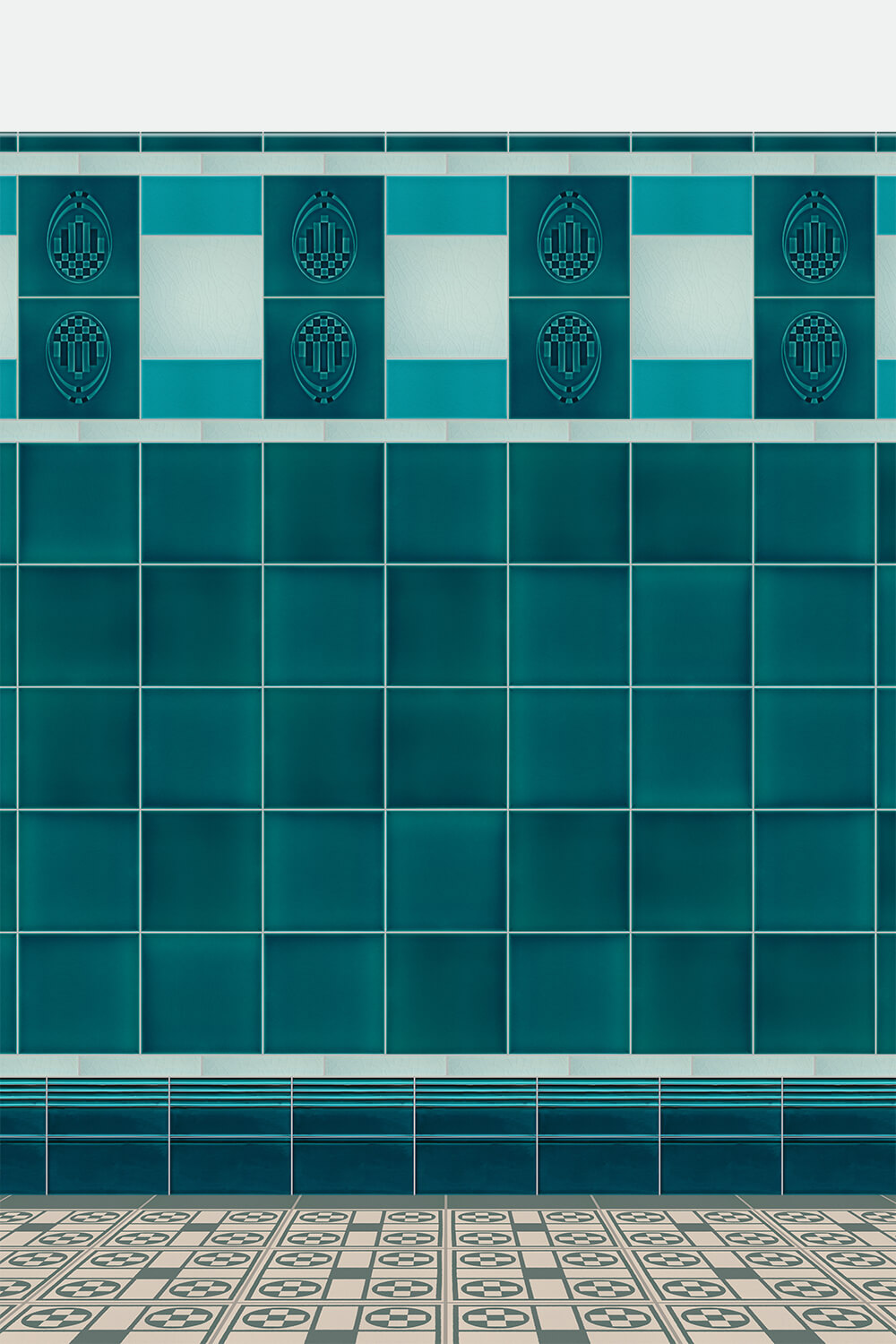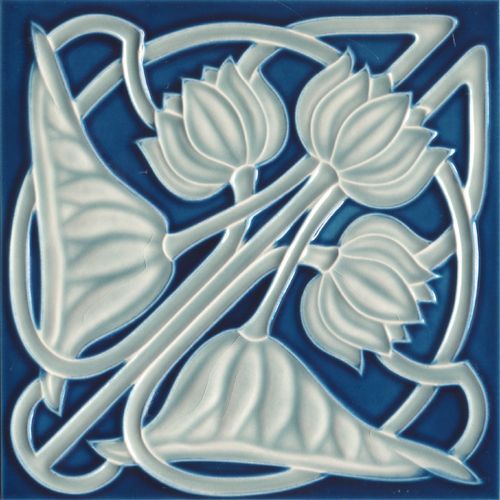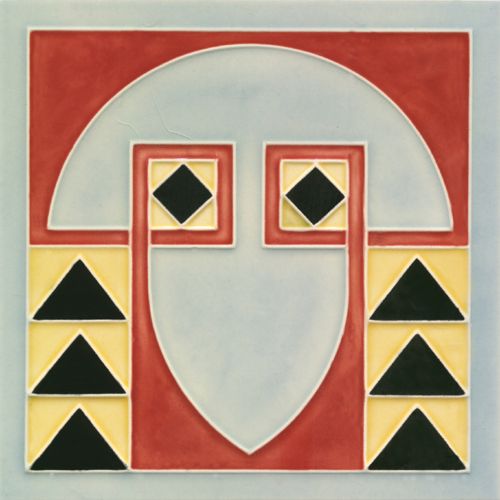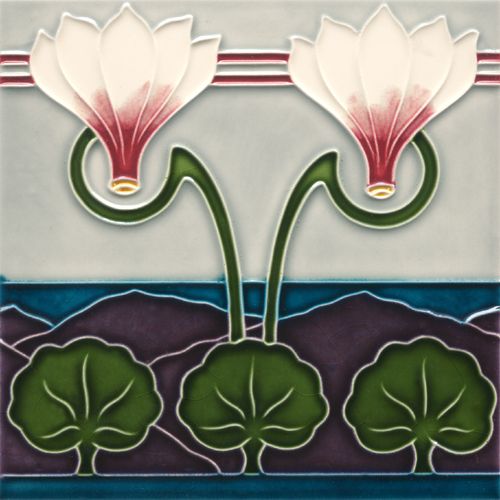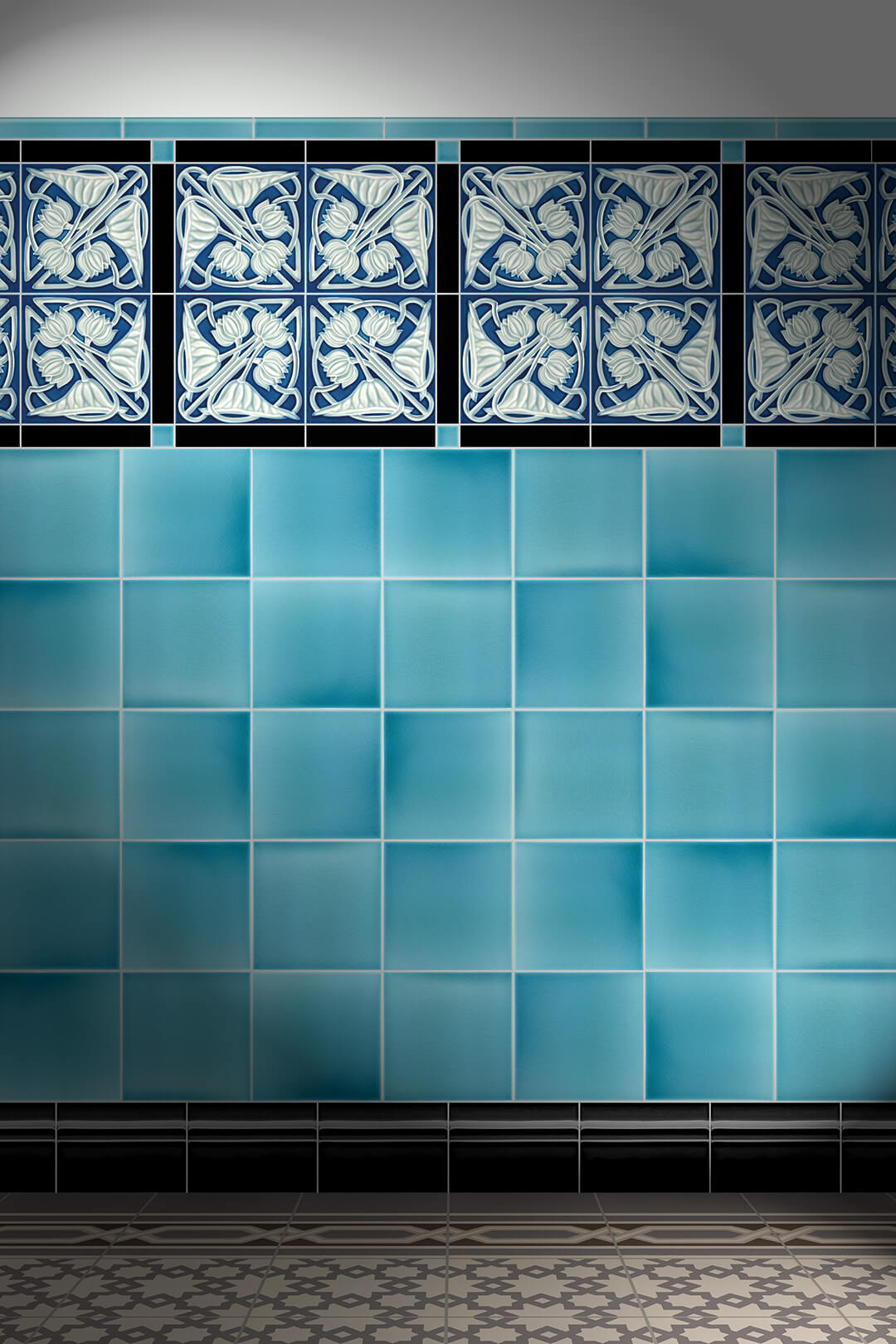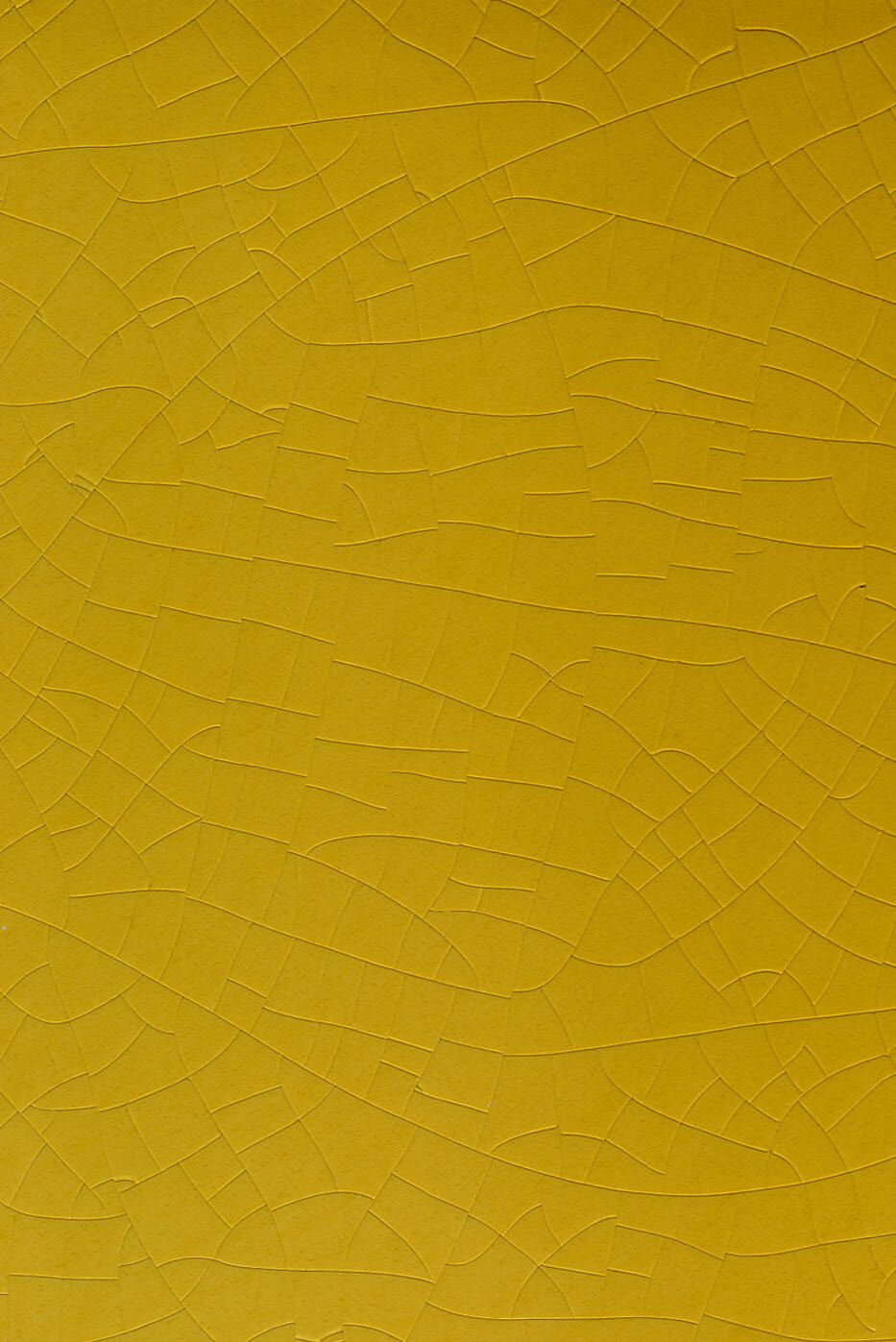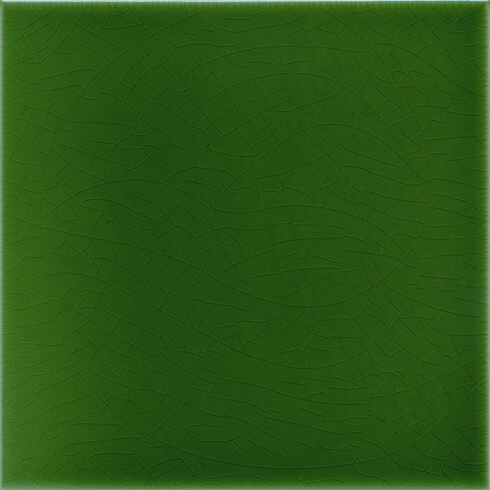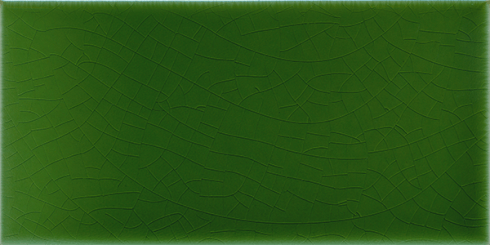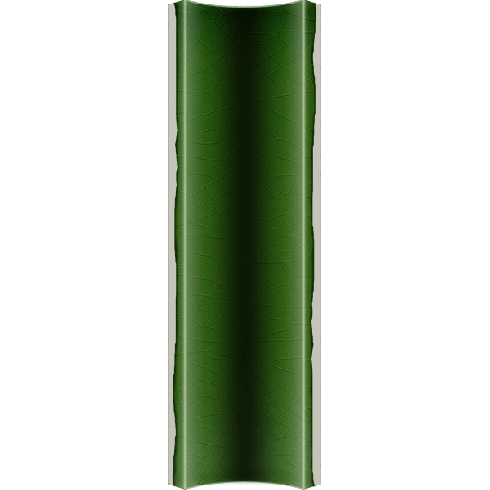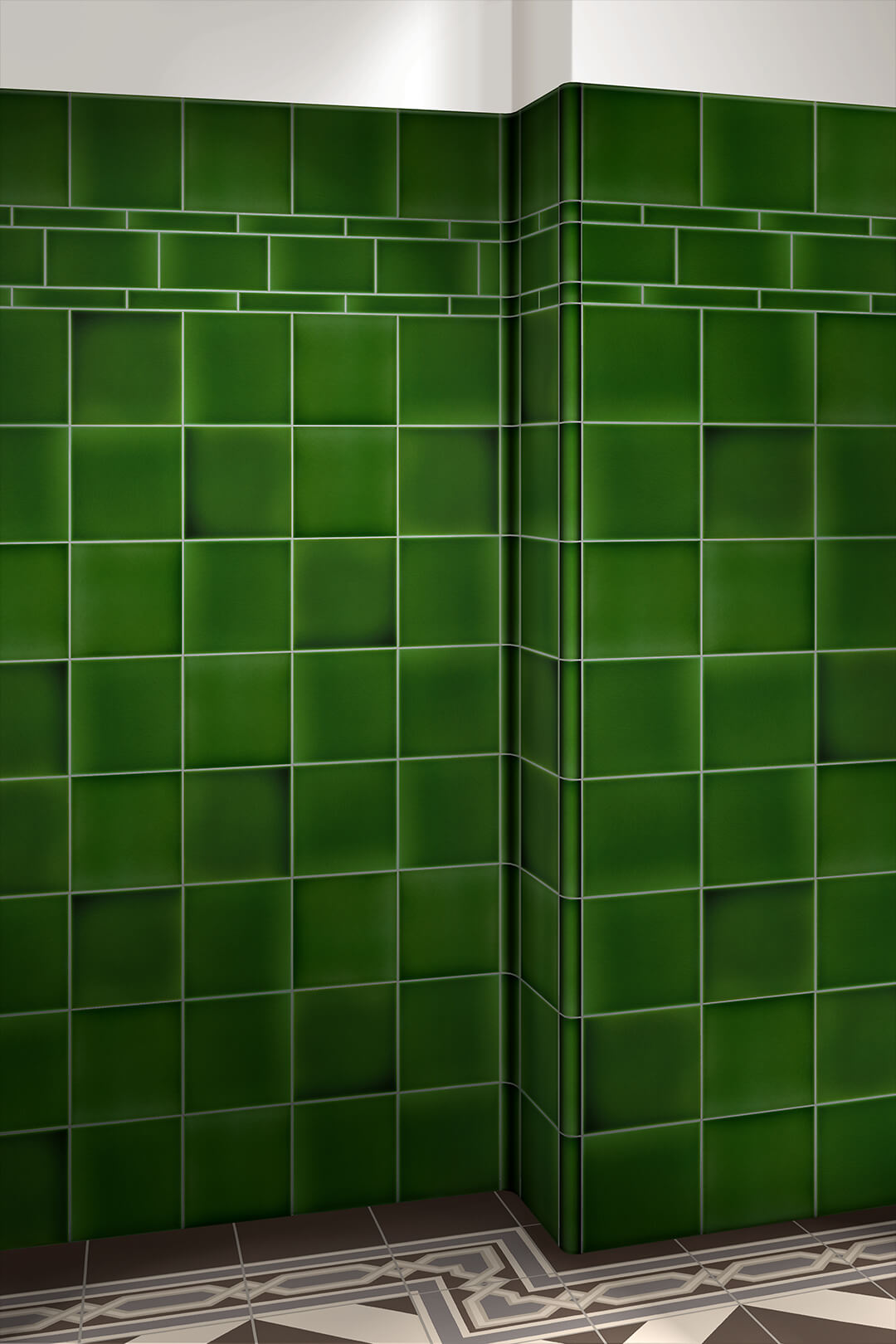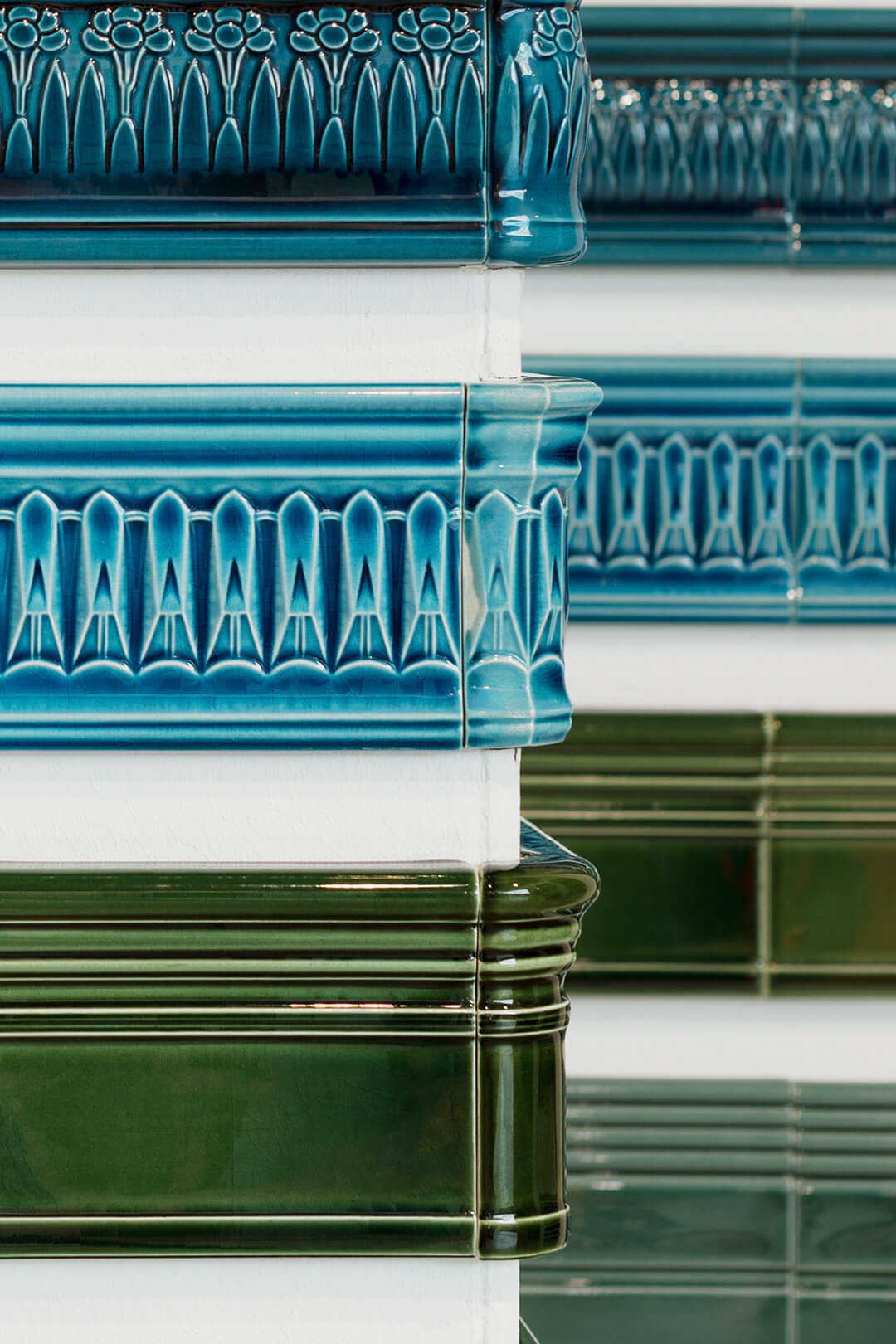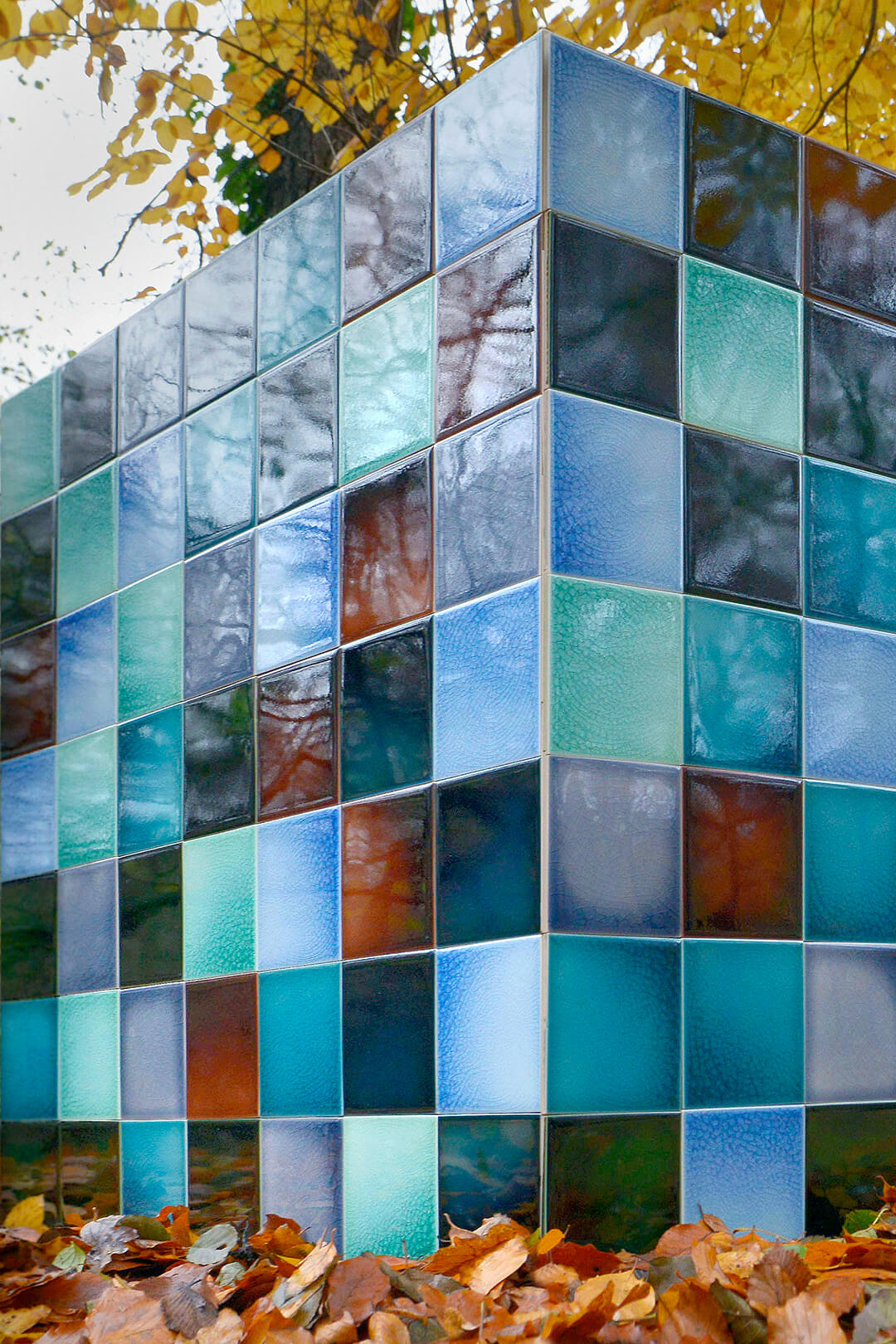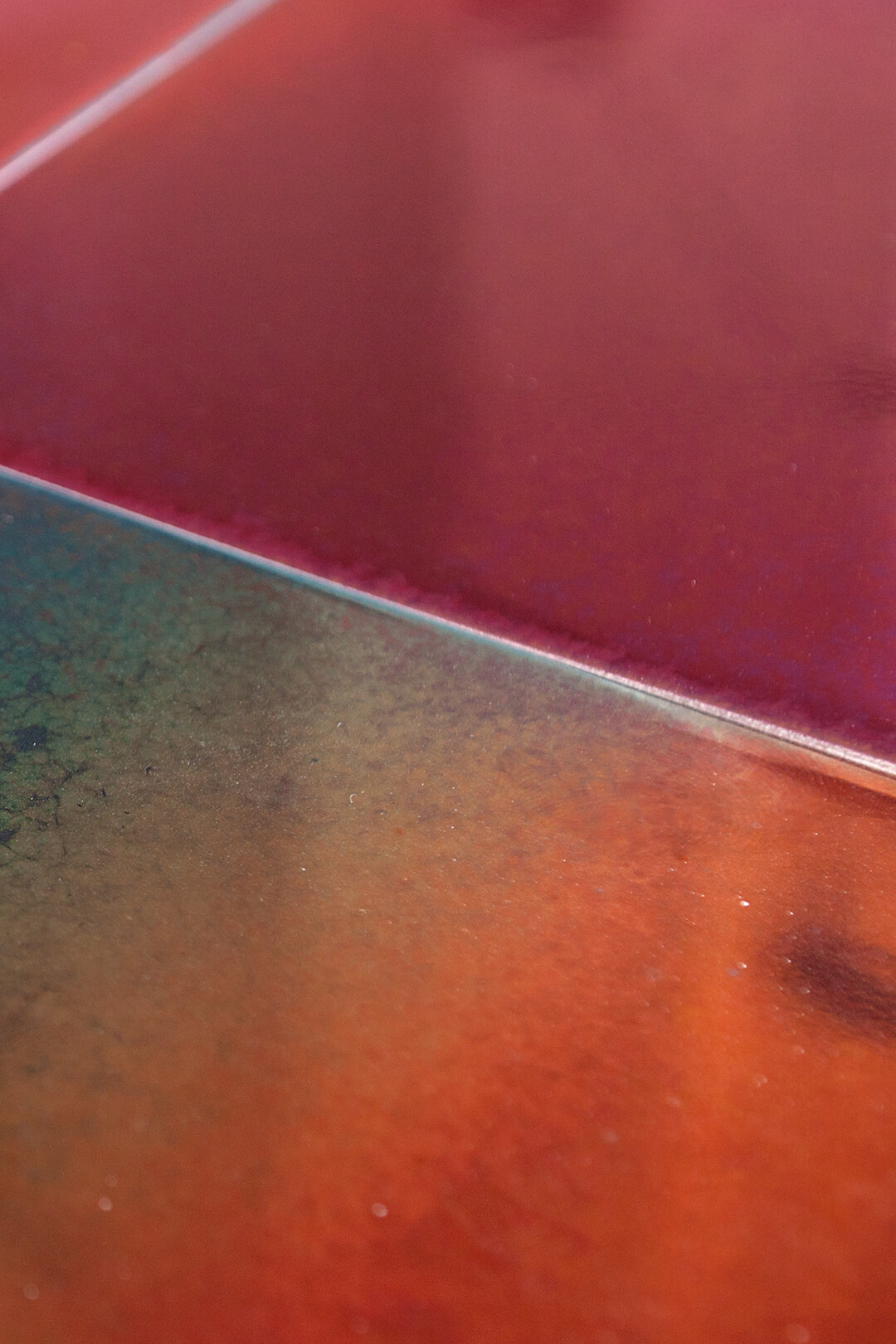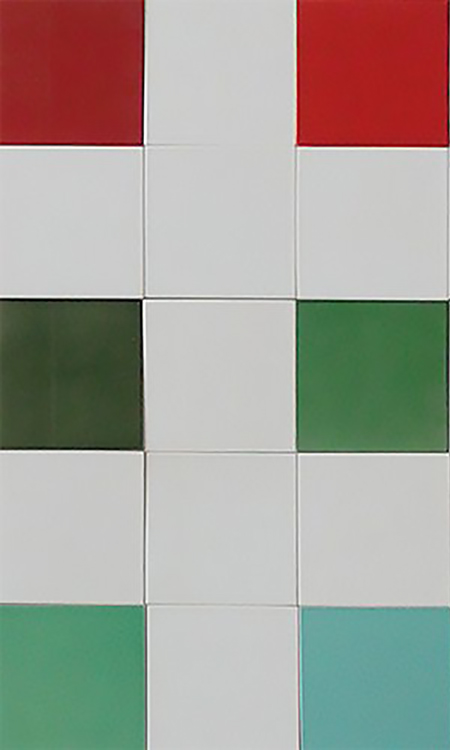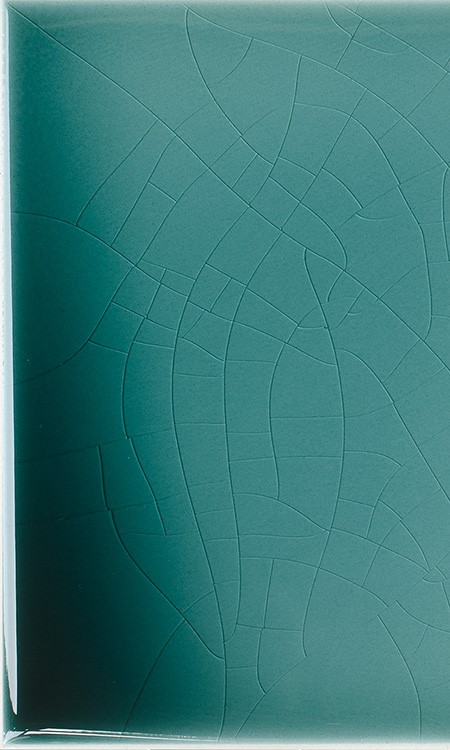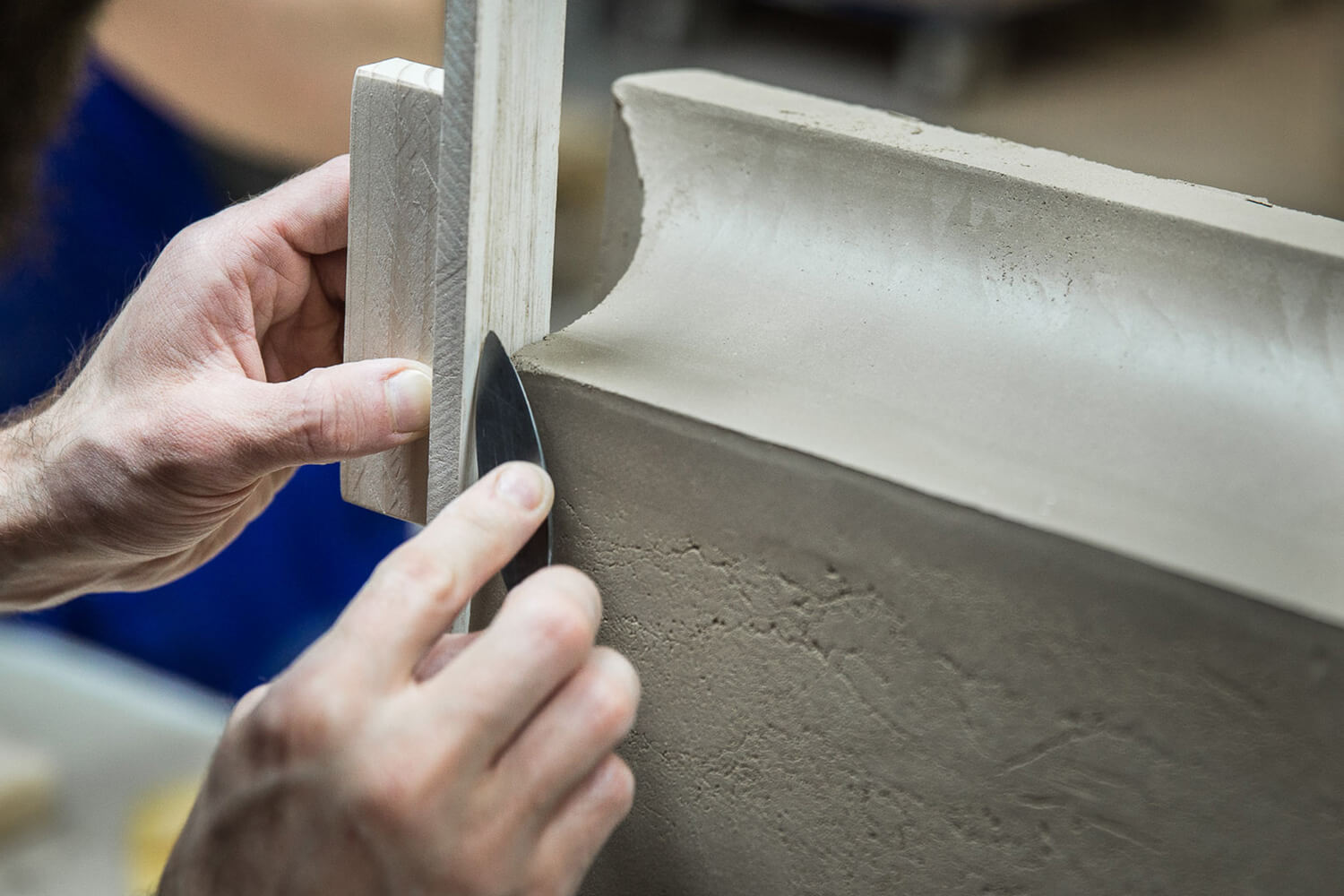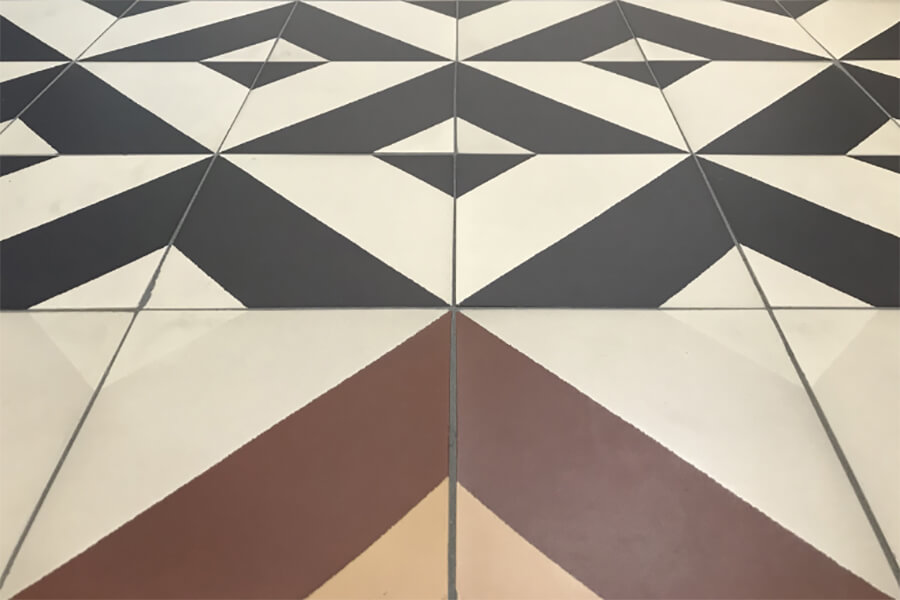Wall tile programm
Our wall tile range includes historical wall tiles and modern artist designs based on traditional craft techniques. All tiles are manufactured in our factory in Sieversdorf.
The Art Nouveau Programme
Our Art Nouveau range includes decorative tiles, plain glazed tiles and numerous formats for structuring panels. Border and skirting tiles as well as bullnosed tiles with rounded edges provide a sophisticated finish. All-ceramic corner elements, quarter rounds and numerous other formats make elegant solutions possible for almost every situation and are a real eye-catcher.

Plain glazed
Flat liners
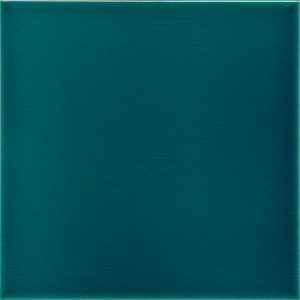
Plain glazed
15 x 15 cm
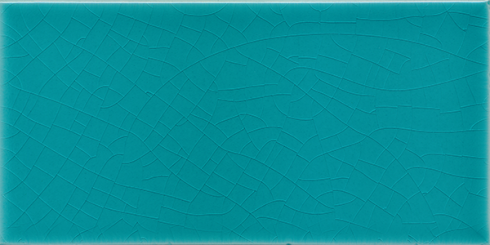
Plain glazed
Half tile
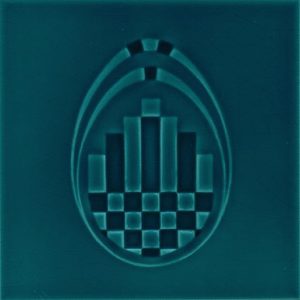
Plain glazed
Decorated tile
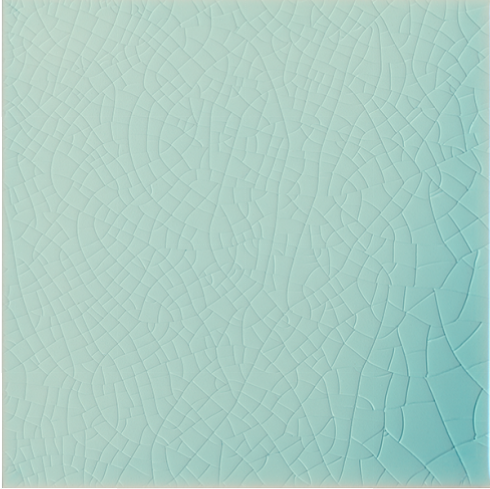
Plain glazed
15 x 15 cm
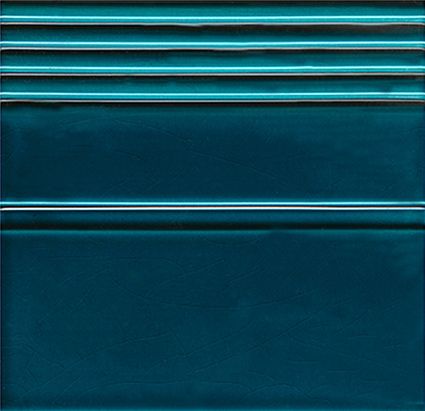
Plain glazed
Base tile
Decorative tiles
Golem has produced bricks and terracottas for the restoration of historical buildings since shortly after the fall of communism. In the post-reunification period, especially in the eastern part of Berlin, a large number of architectural monuments, such as the art nouveau ensemble of the Hackesche Höfe, which is known throughout the world today, were restored with a great deal of commitment and lifeblood and thus saved from decay.
Many of our replicas of historic tiles, which we have developed and “reinvented” in this special setting, are now being re-produced in our Sieversdorf manufactory, as the interest of numerous architects, restorers, other experts, building owners and private interested parties has encouraged us to take this step.
Hand glazed tiles
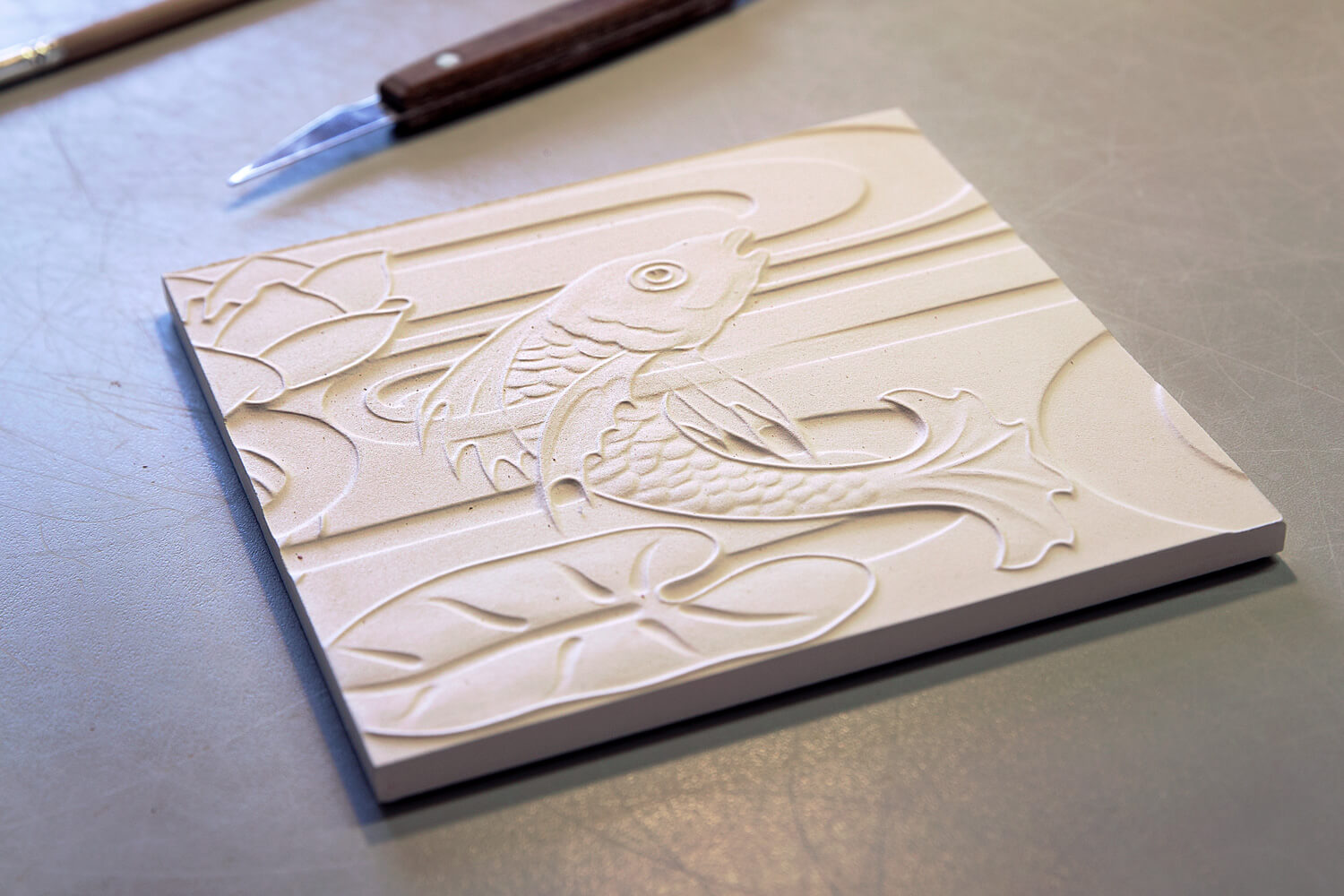
The green carp (original design Villeroy & Boch, 1900) is one of the best known classics among our Art Nouveau tiles. The complex motif of fish and water lily is initially only recognizable in heights, depths and outlines on the light clay shard. Before the first firing the relief was transferred onto the blank with a press stamp.

Painting the decorative tiles requires a high degree of skill and experience. Using a slip trailer the ceramist then applies the glaze evenly and quickly. Like a dike, the bridge of the relief ensures that the different colours do not run. The colours of the unfired glazes differ considerably from those of the fired ones.
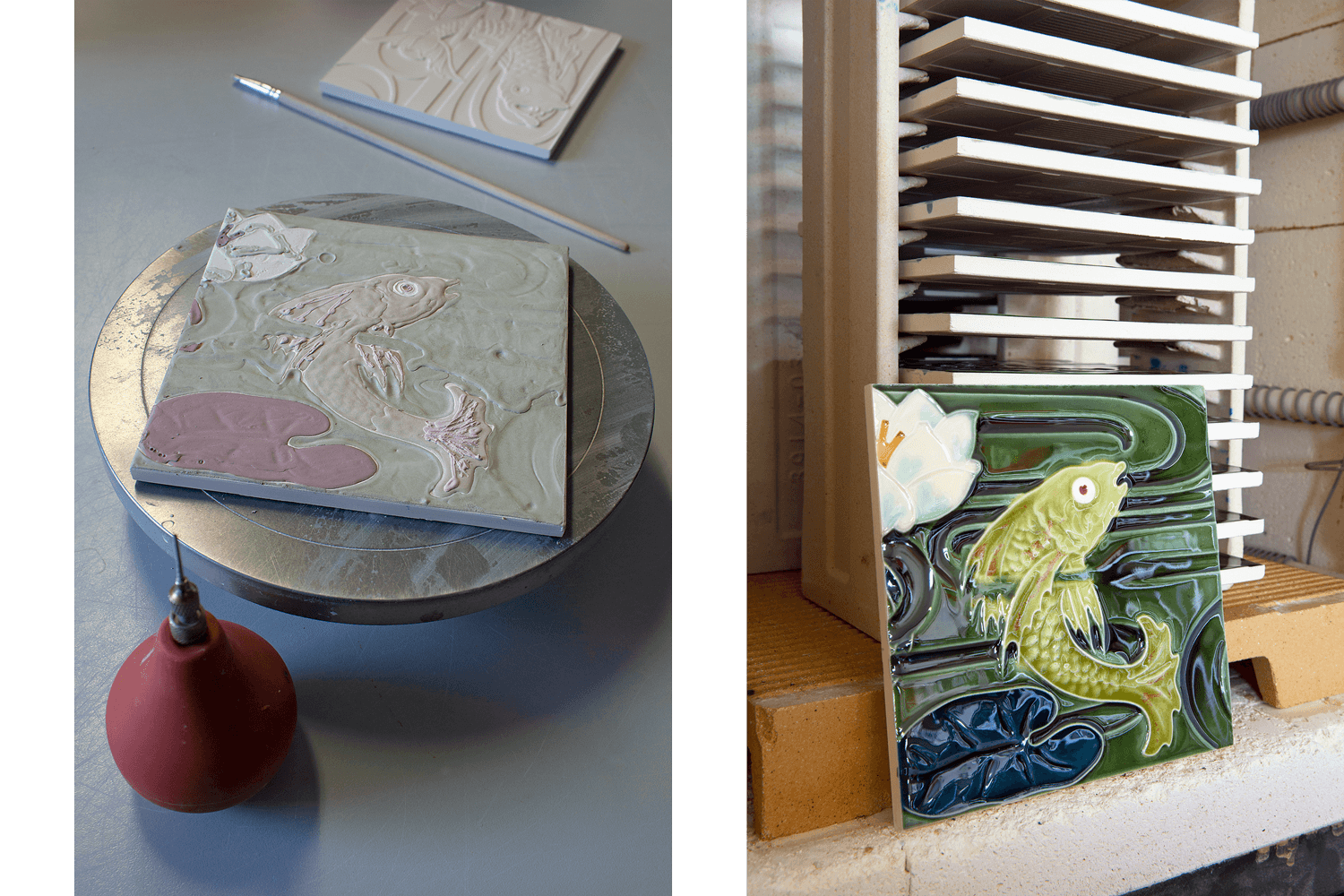
These only show in the kiln when all the components melt together. When painting, patience and dexterity are just as important as time and stamina. Each order is glazed by one person, making the series look as homogenous as possible. Finally, the tile is placed in the kiln a second time. Now the glaze takes on its final colour.
Plain glazed
Our plain glazed wall tiles complete the Art Nouveau programme. Our tiles receive their brilliance and colour depth by the use of a light stoneware shard. Most glazes form the fine cracks typical of Art Nouveau glazes, the so-called craquelé. The movement of the glaze melt during the firing process creates the characteristic, beautiful play of colours, which is particularly effective in combination.
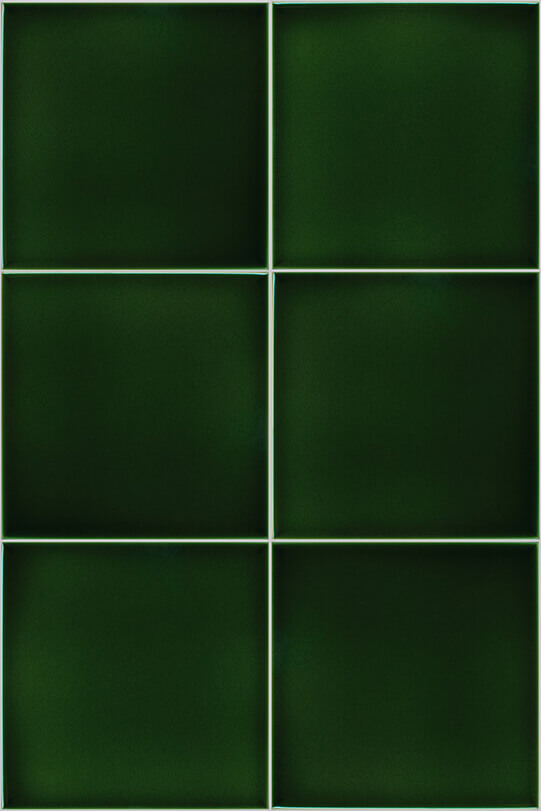
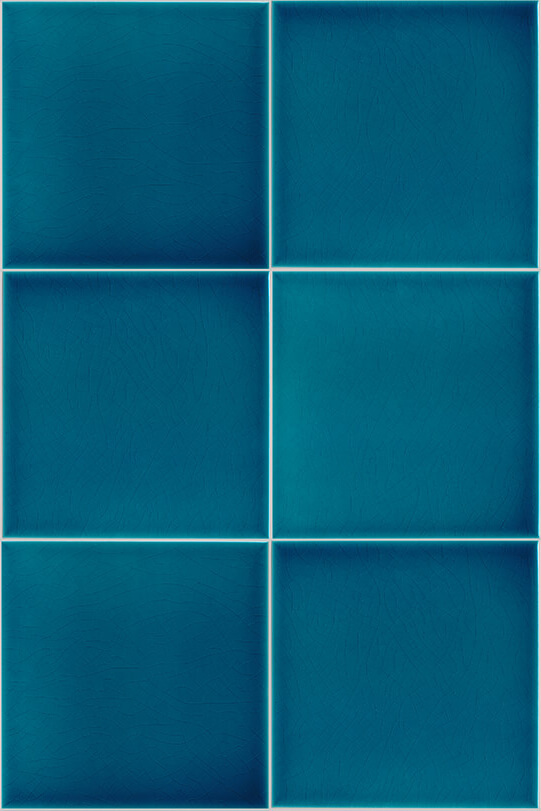
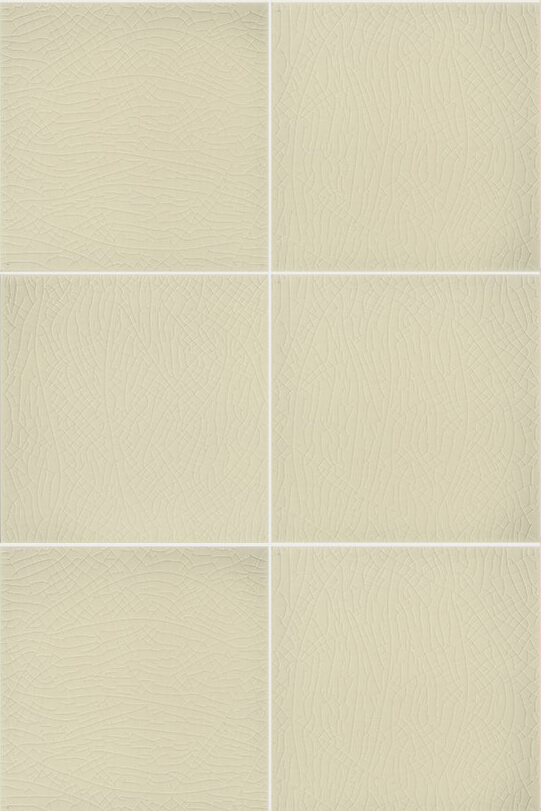
Formats
The structuring of wall tiles often represents an important design feature of historical layouts. Our full-size plain wall tiles are complemented with numerous size and form variants for sophisticated laying patterns. Flat liners and half tiles for example, as well as corners and inner corners serve to structure the surface elegantly.
The bullnosed variants of these wall tiles are also available in every colour and provide a cleaner, but still sophisticated finish if no architectural moulding is desired to border off the surface.
Borders and plinths
In addition to the ornamental tiles, the Wilhelminian and Art Nouveau period produced a large number of relief-style borders and skirting tiles for the structuring of tile panels. All monochrome borders and skirting tiles can be produced in the various glazes of the monochrome wall tiles (F10 + glaze number).
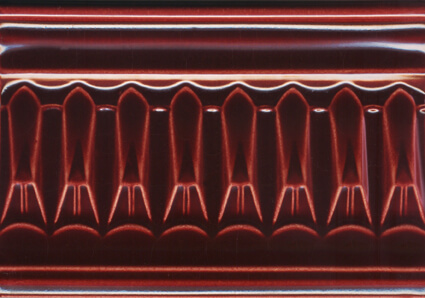
Border
Plain glazed
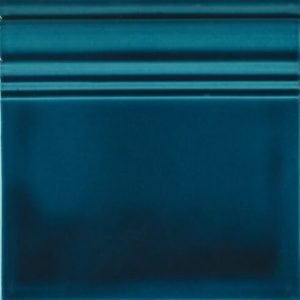
Plinths
Plain glazed
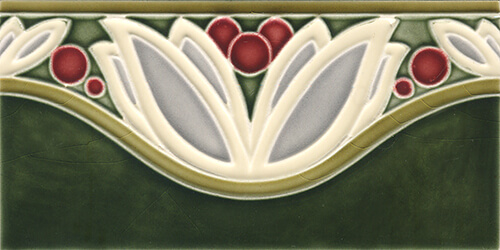
Border
Multi-coloured
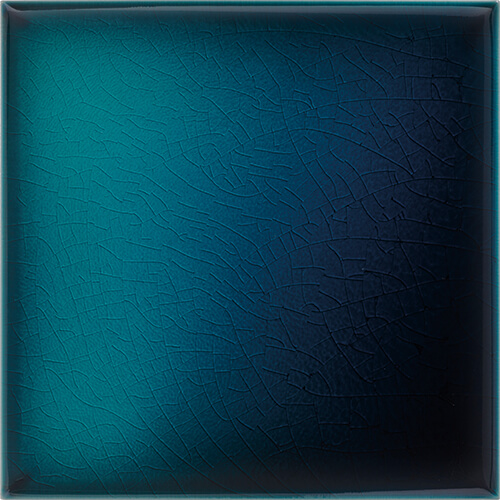
THE BRILLIANT TILE
INNOVATION IN COLOUR AND FUNCTION
Our wealth of experience gained from years of work and production of traditional tiles in combination with numerous ceramic experiments result in GOLEM’s brilliant tile.
With the brilliant tile, GOLEM is breaking new ground in technical and design terms; its visual appeal lies above all in its particularly lively play of colours. From a technical point of view, it combines the colour intensity and depth of our wall tile glazes with the resistance of stoneware and therefore guarantees frost resistance and durability over generations.
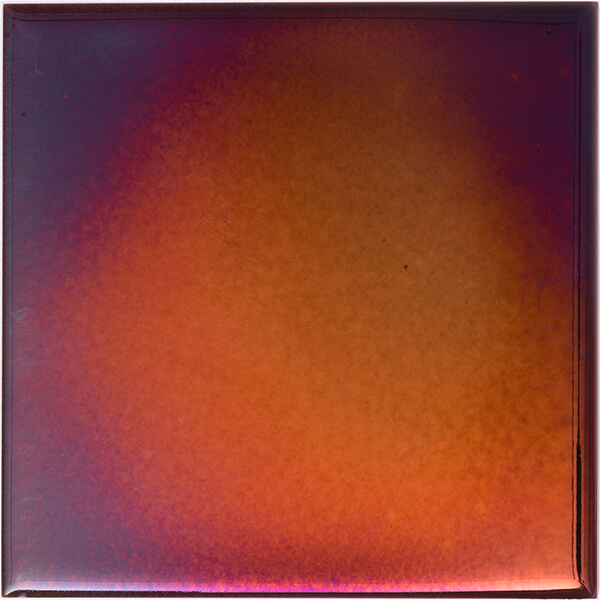
IN STOCK IN OUR OUTLET STORE
Reduction firings
In our reduction firings, the glaze is applied to the blank with a ladle. This manual glaze method creates a thicker, particularly vibrant surface with a variety of nuances. After glazing, the tiles are fired twice and oxygen is extracted from the combustion chamber. Through this process we give chance a big space. This leads to particularly strong colours and a unique play of colours. Each tile is unique.
In stock at the factory outlet
There are many reasons why individual batches are sold in our outlet. They have one thing in common: They are immediately available!
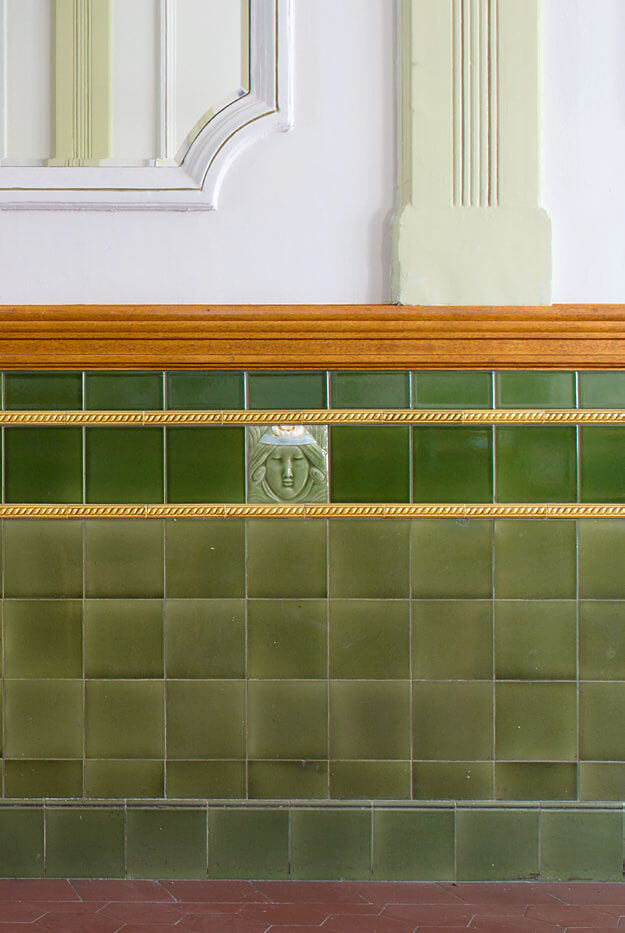
Restoration and
reproduction of
historical tiles
Although our standard wall tiles resemble the historical models, they differ from the originals in size, colour or brightness. In the past there was no continuous standardization and for understandable reasons we cannot today use all ingredients of the glazes of the 19th century.
The way to a good restoration of existing tiles can therefore only lead to a special production of the tiles after presentation of the originals. The adaptation of the replica to the original is then in the hands of our specialists.
To be able to write a non-binding quotation, we need exact details (dimensions and quantity) of the tiles to be reproduced.
Reference examples
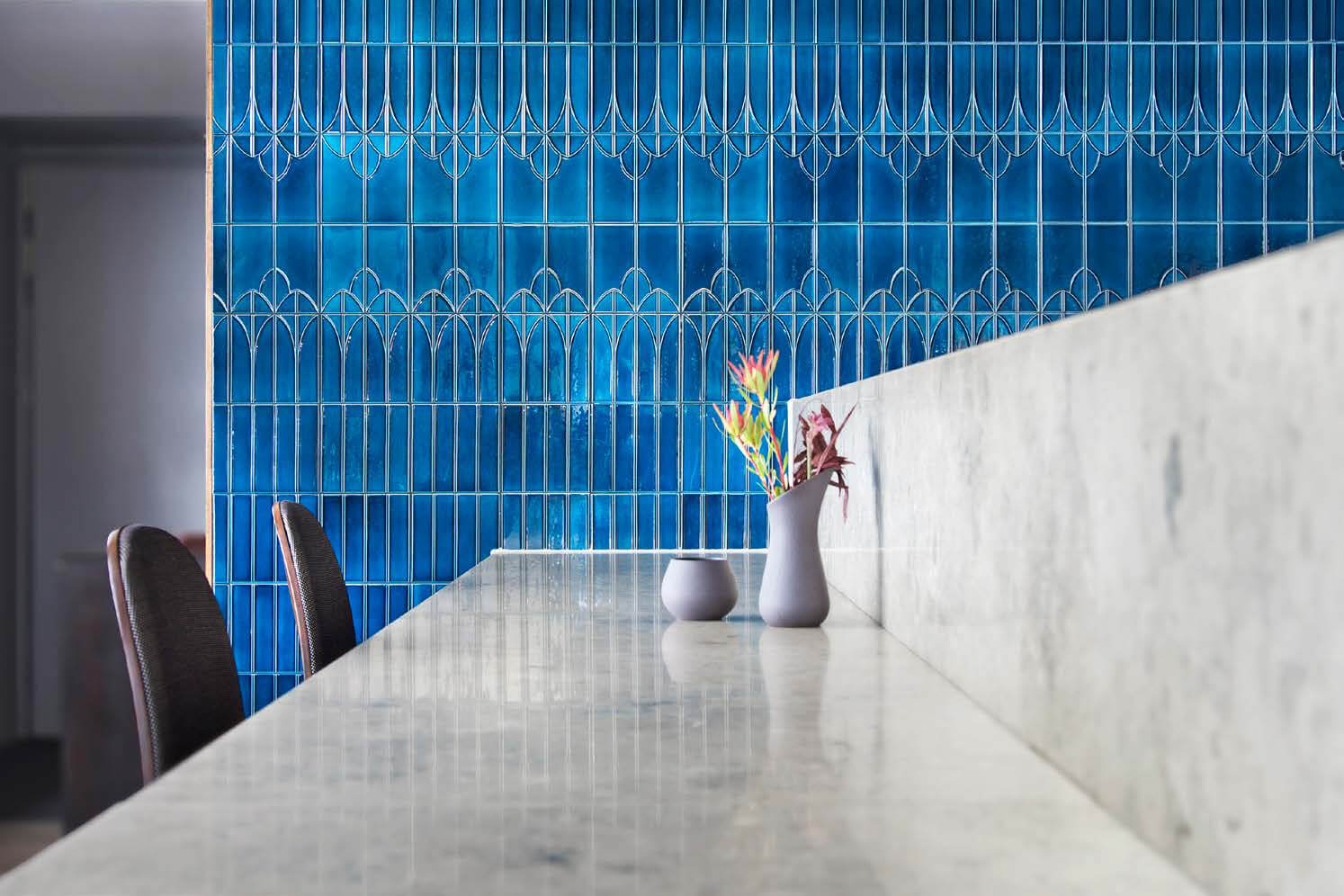
Restaurant »The Standard«, Copenhagen
A former ferry terminal, planned in the 1930s by Kristoffer Nyrop Varming, has for some years now housed three restaurants, two bars and a jazz club. The open kitchen with adjoining bar and dining area was renovated with GOLEM wall tiles F 139 a, b and c (Original design: Villeroy & Boch, 1904) in glaze no. 653.
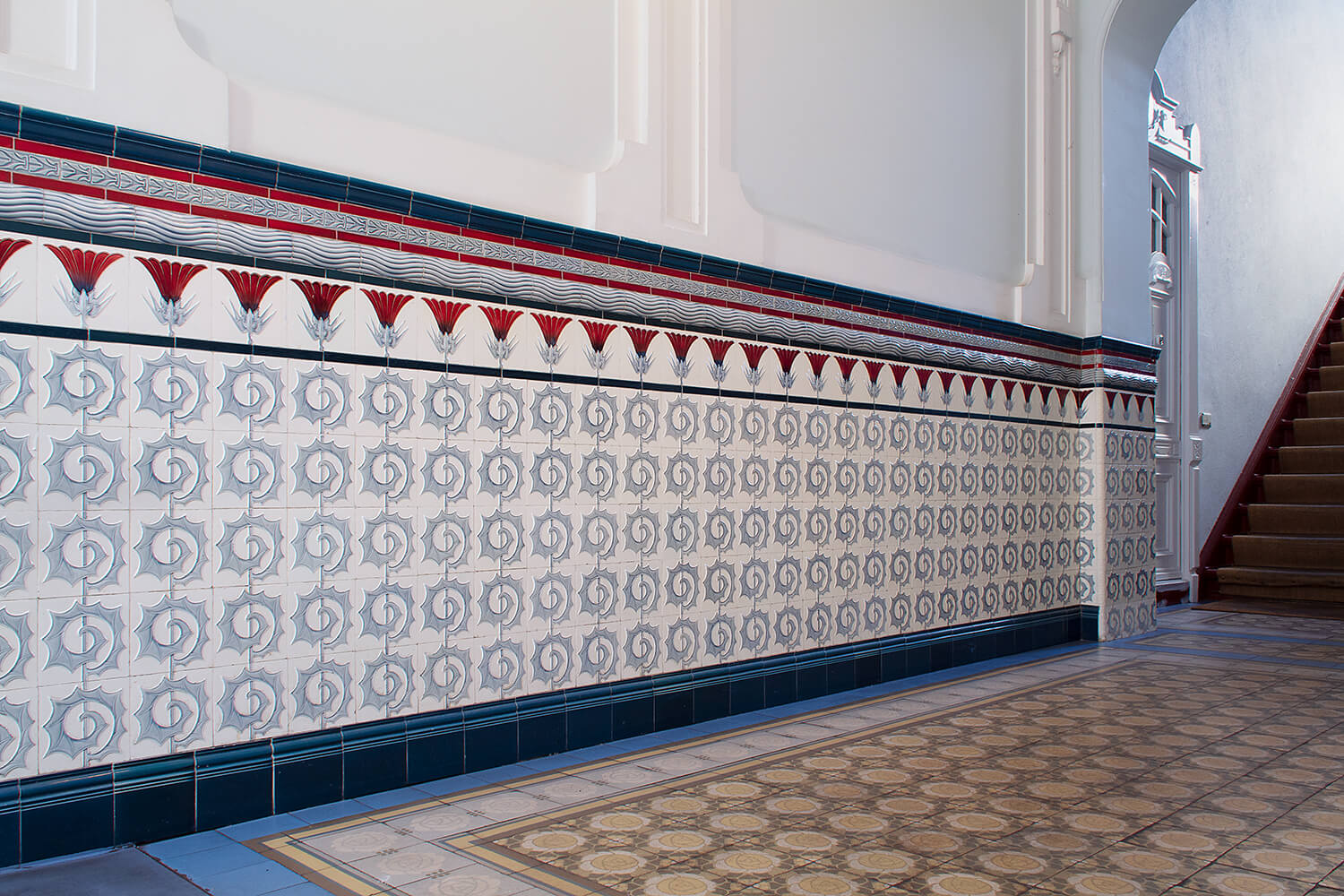
Historic house entrance, Berlin Pankow
Partial restoration of the original Art Nouveau panels in a house entrance in Berlin-Pankow.
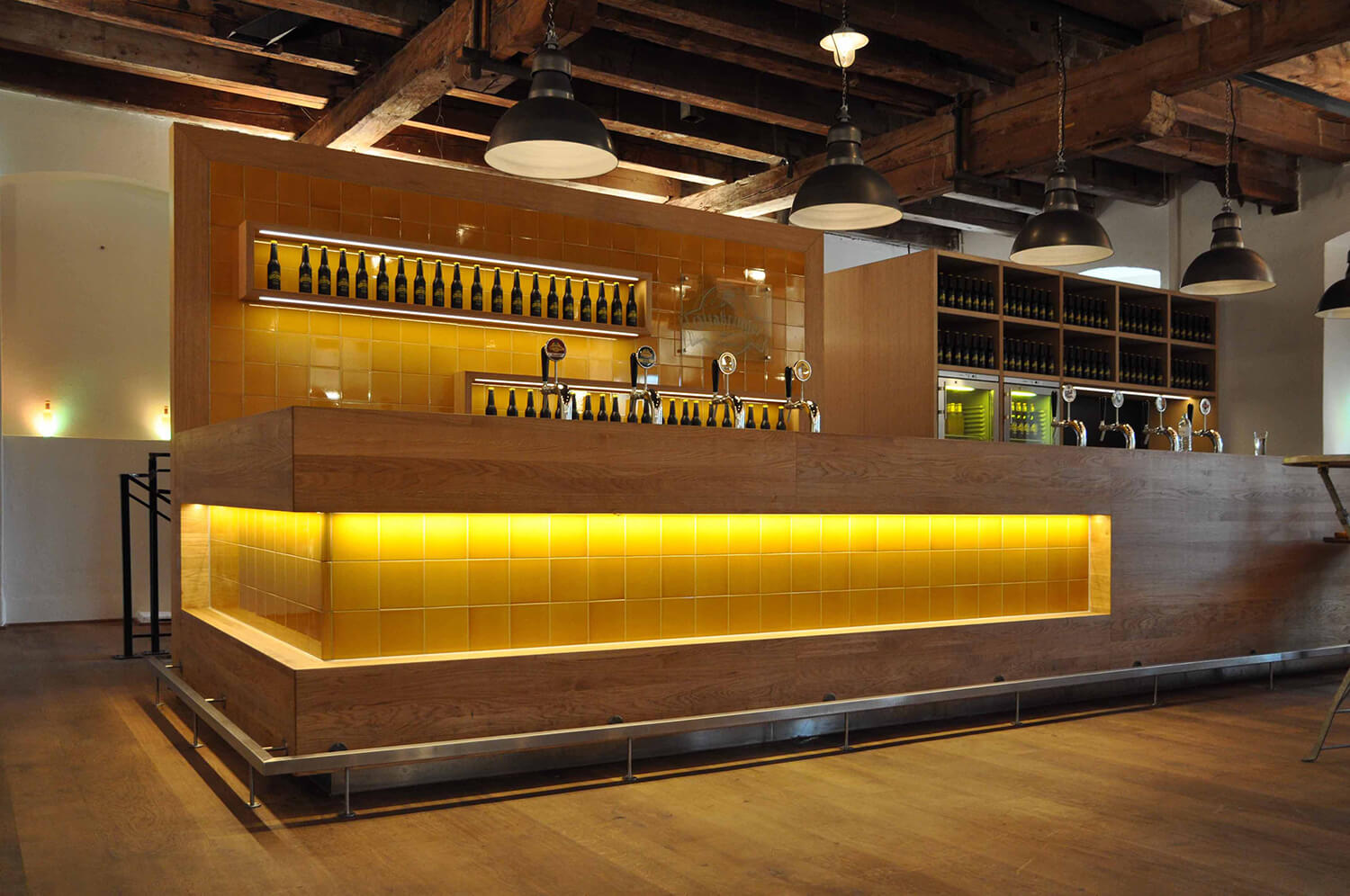
Ottakringer Brewery, Vienna
For Ottakringer brewery bar in Vienna GOLEM developed the glaze “beer yellow” – the wall tile F 10.575.
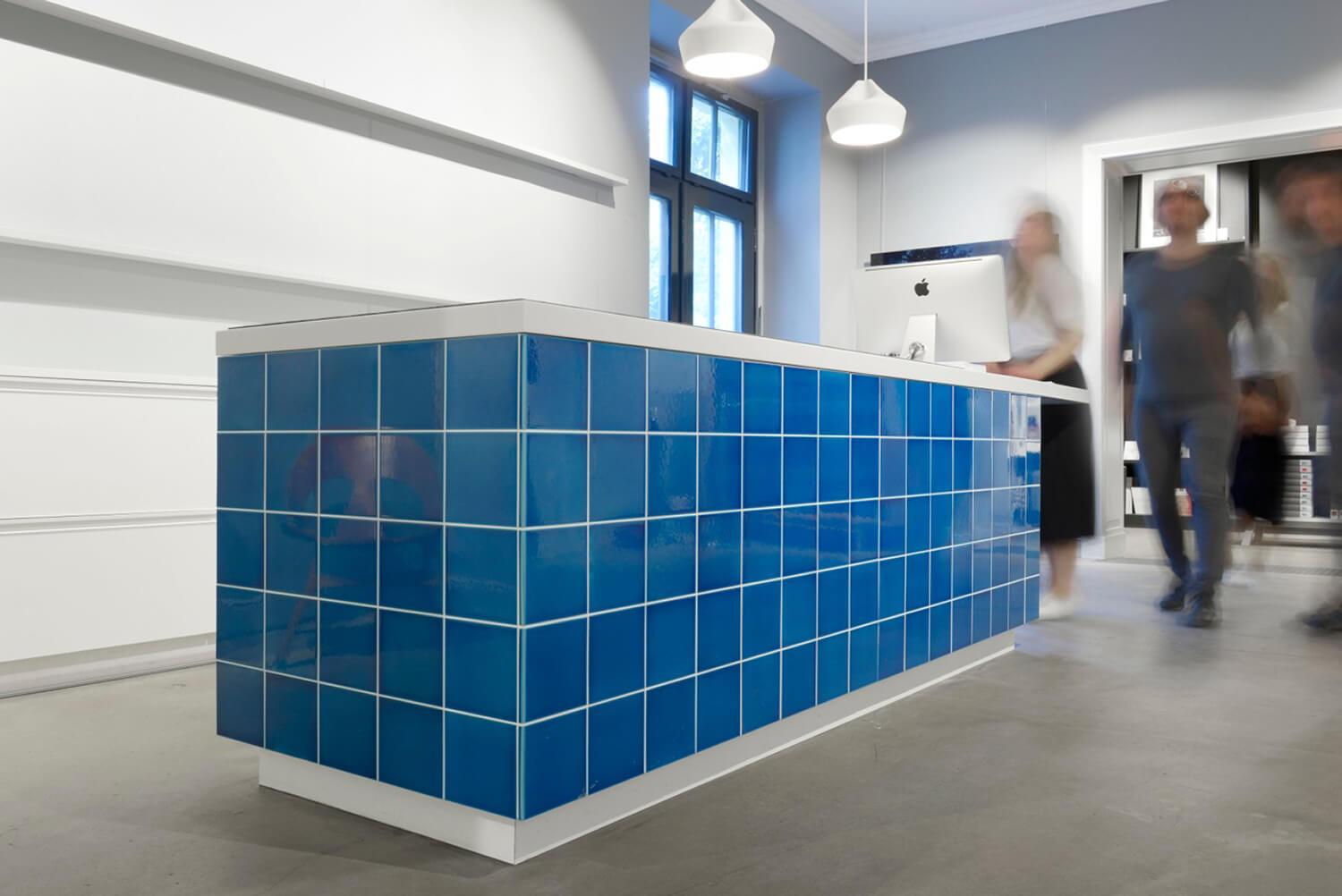
Lumas
Presentation counter for the Lumas showrooms with single coloured wall tiles.


